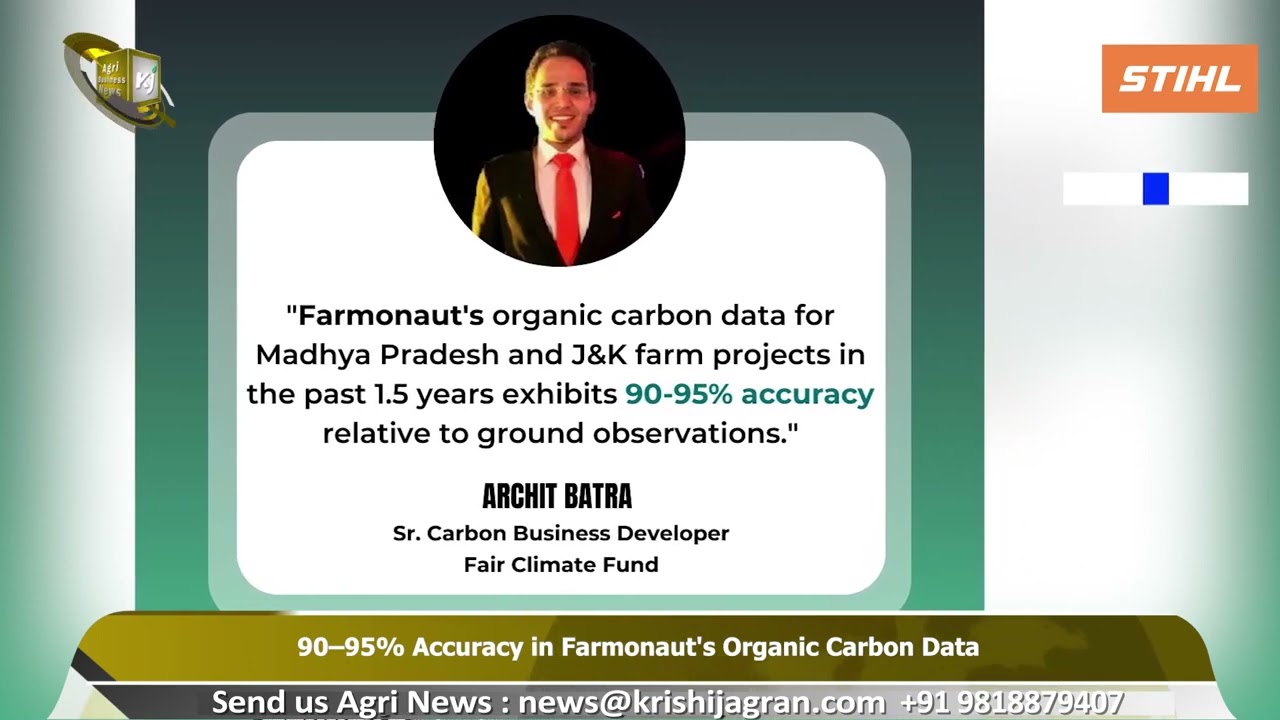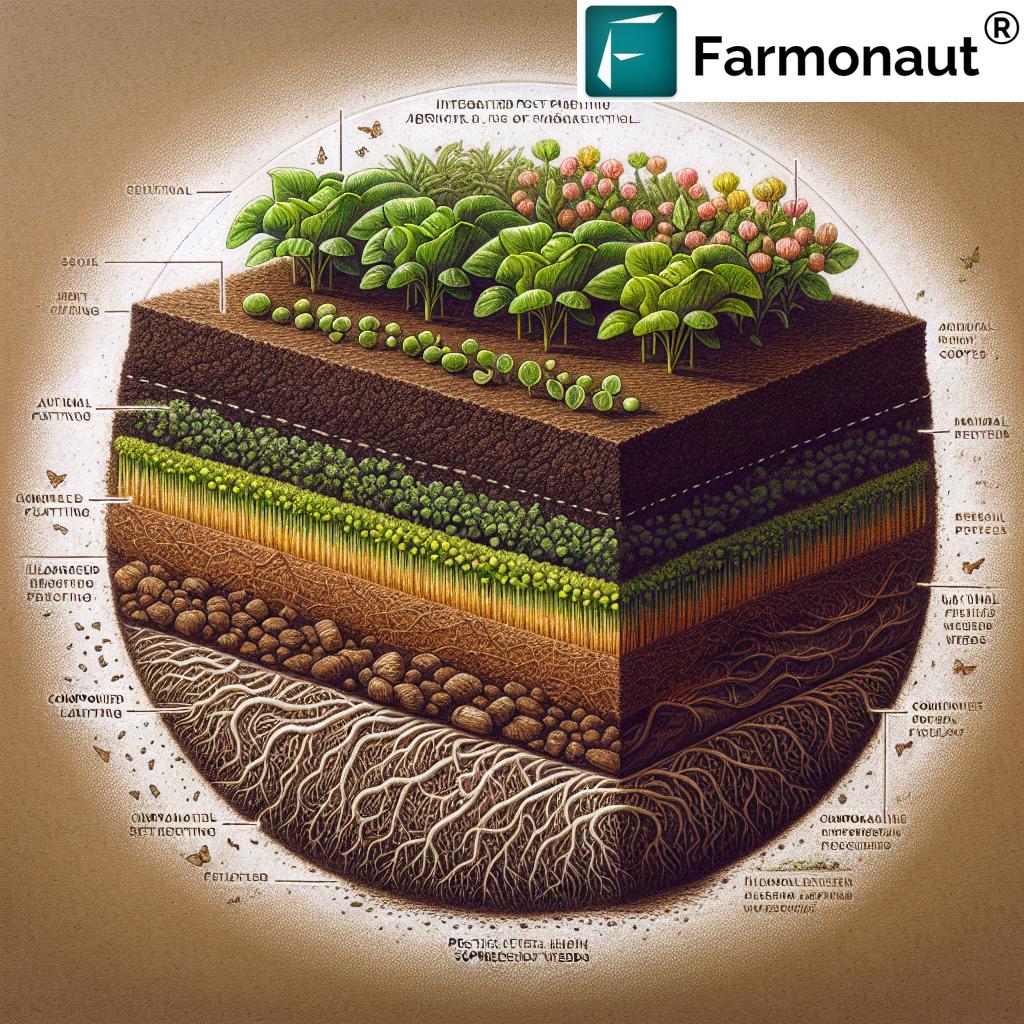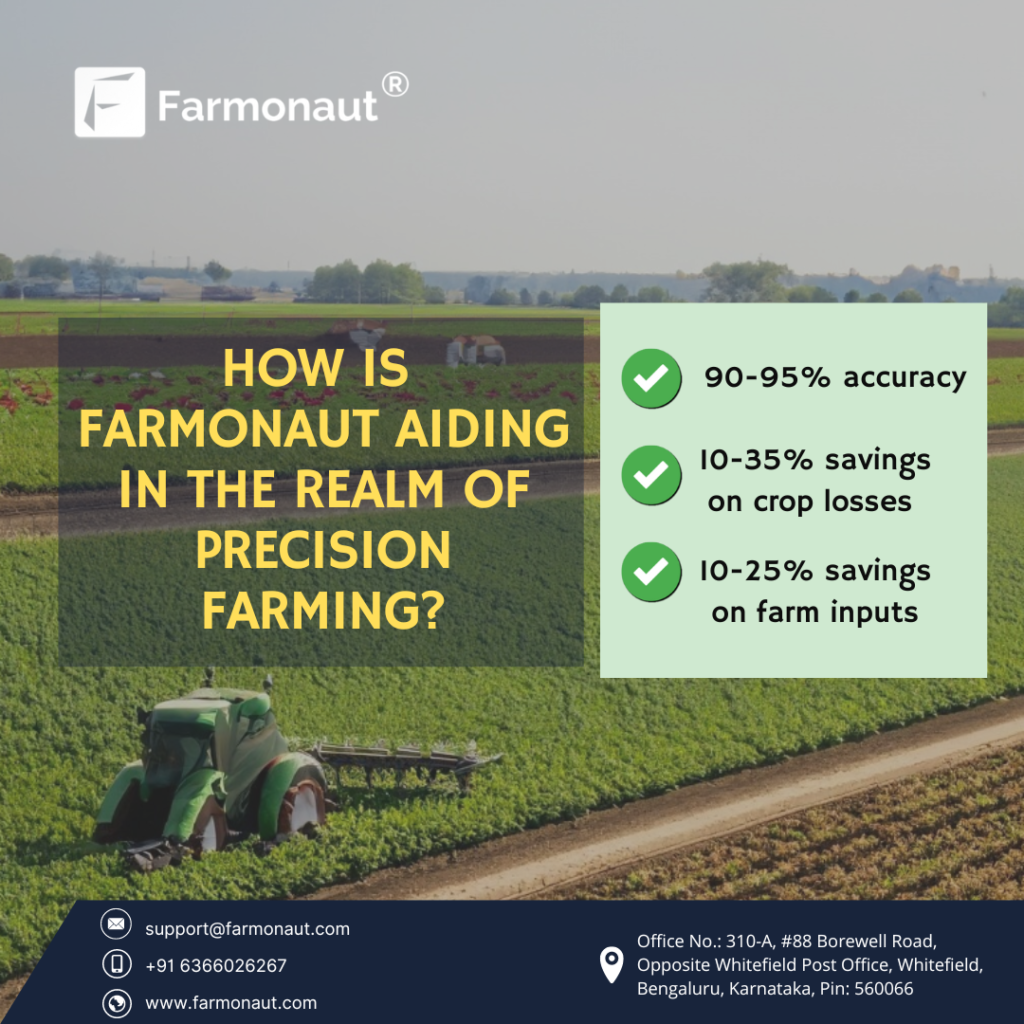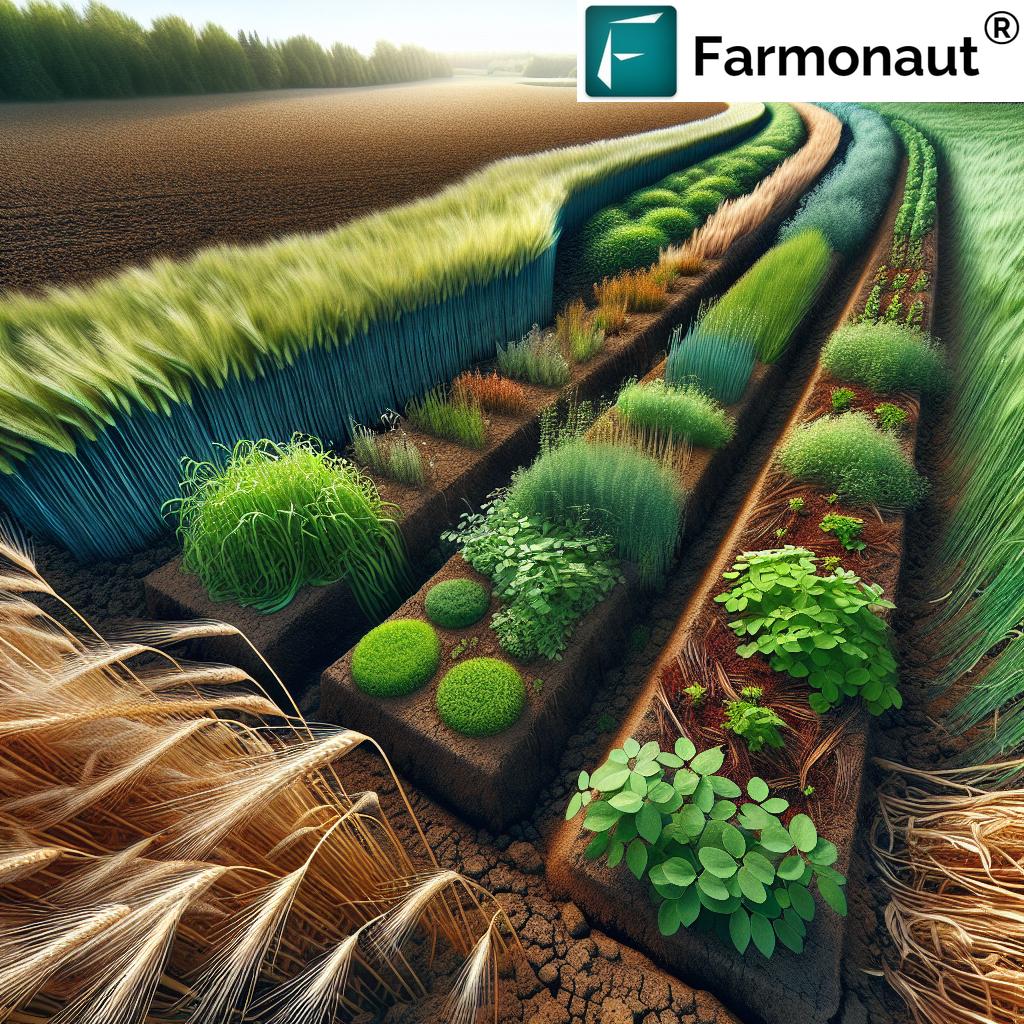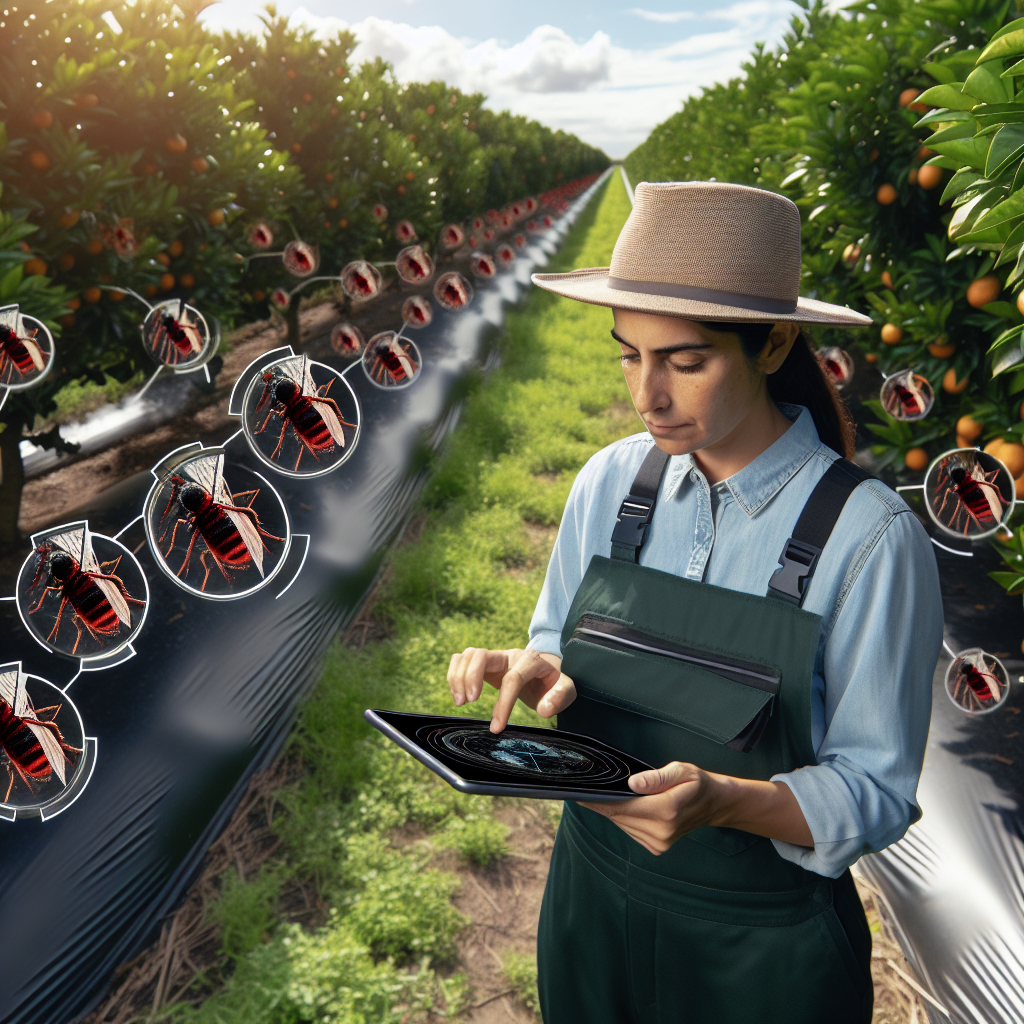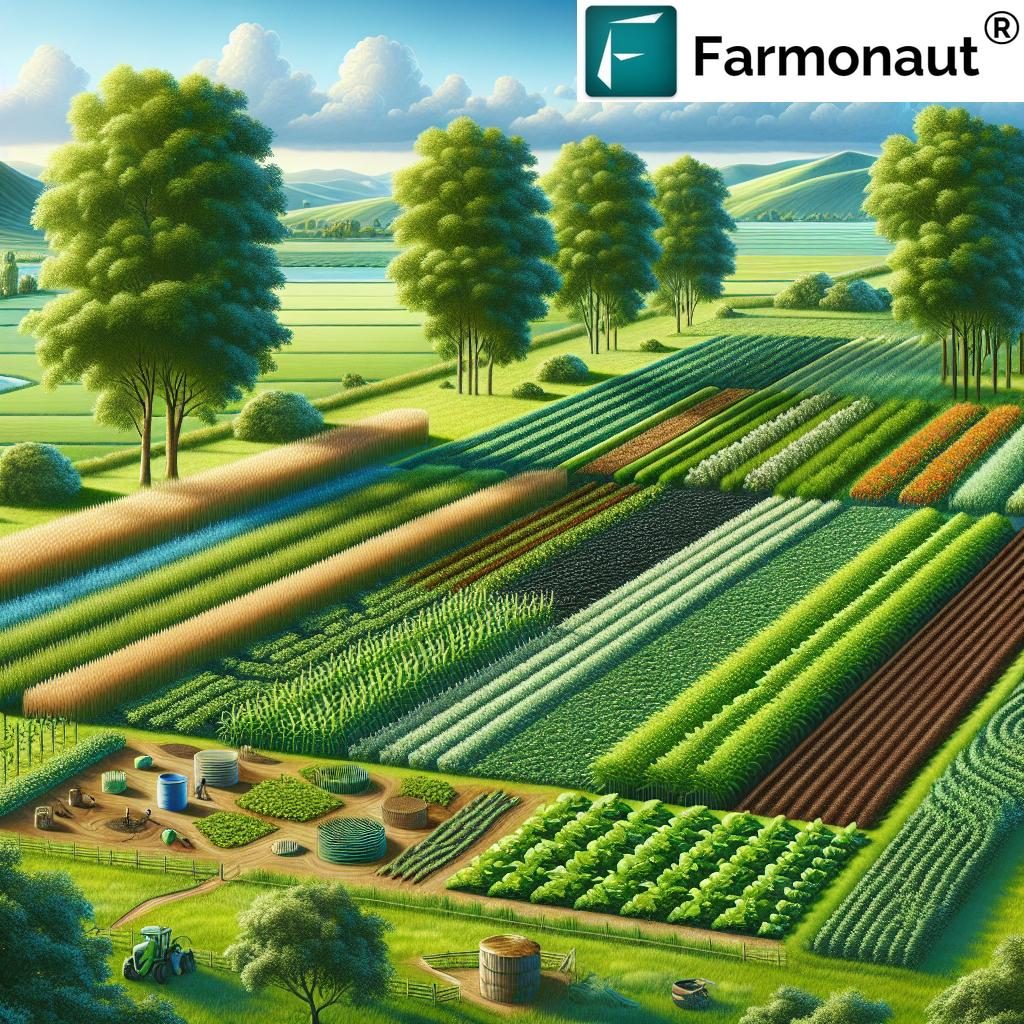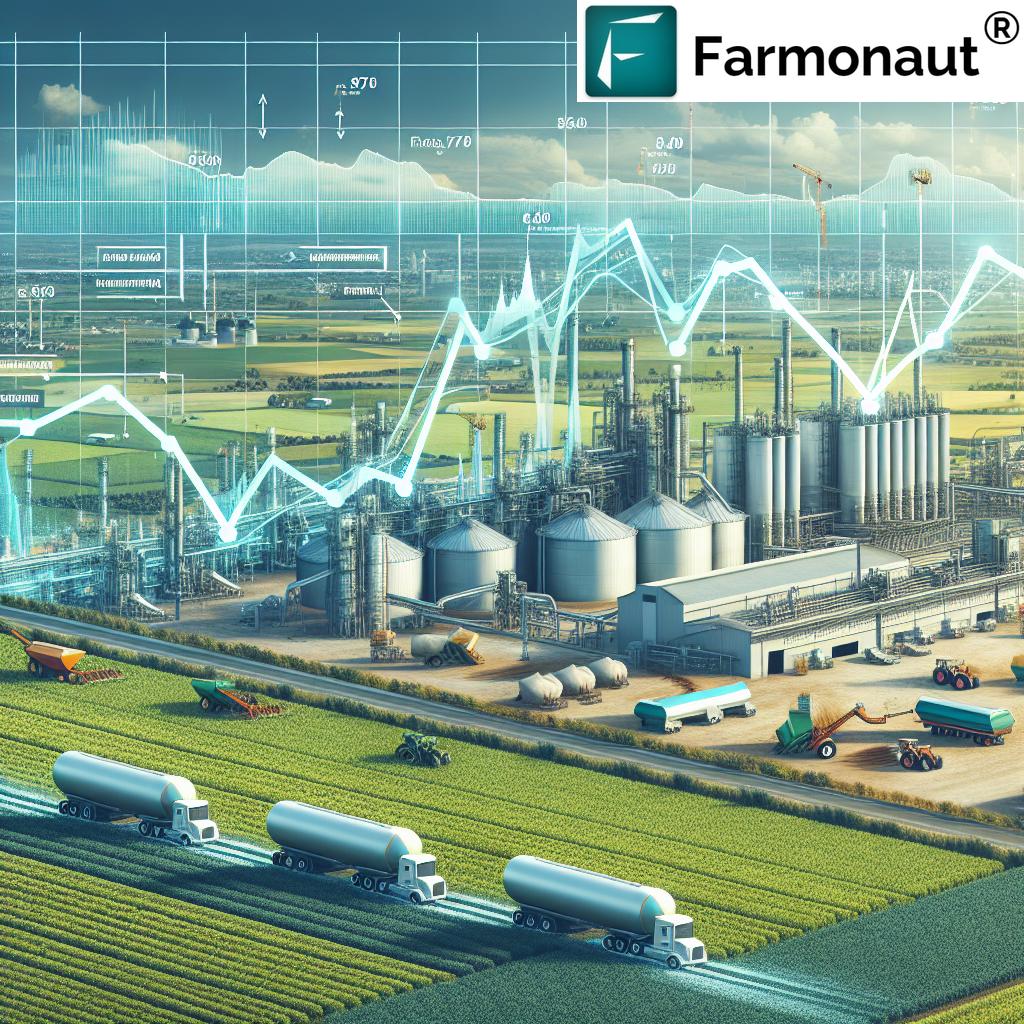Organic Farming Practices: 7 Shocking Soil Boosting Hacks
“Organic farming increases soil organic matter by up to 28% compared to conventional methods, boosting long-term soil fertility.”
Introduction: The Heart of Organic Farming
Organic farming has taken root as a transformative movement in global agriculture, offering a beacon of hope for a healthier planet and a more sustainable food system. At its core, organic farming embraces harmony with nature, shunning synthetic fertilizers, pesticides, and genetically modified organisms (GMOs) in favor of approaches that strengthen soil health, boost biodiversity, and promote lasting ecological balance. As organic farmers, researchers, and technology enthusiasts, we continually seek new ways to enhance soil fertility, support ecosystem resilience, and produce nutritious food for consumers worldwide.
In this comprehensive guide, we unlock the secrets of seven powerful, sometimes overlooked organic farming practices—our “shocking soil boosting hacks”—that elevate the health and sustainability of farms of all sizes. Along the way, we’ll explore the principles of organic farming, compare traditional and organic methods, discuss the benefits (and challenges) of going organic, and showcase how technology platforms like Farmonaut’s precision agriculture solutions empower us to grow smarter and greener. Ready to revolutionize your soil, protect the environment, and join the future of food production?
Understanding the Principles of Organic Farming
The philosophy behind organic farming extends far beyond merely avoiding synthetic inputs. It embodies a holistic vision for sustainable agriculture. Here’s what guides our practice:
- Health: We strive to maintain and enhance the health of soil, plants, animals, and humans. Healthy soil is the root of all life.
- Ecology: Our practices work with natural systems, promoting diversity and ecological balance in farming.
- Fairness: We foster fairness in our relationships—with people, animals, local ecology, and future generations—ensuring equal opportunities and respect for nature and community.
- Care: We take a precautionary approach, acting to protect the environment and the long-term well-being of farm families, neighboring communities, and consumers everywhere.
The path to sustainable agriculture is paved with these guiding principles, alive in every element of our organic farms.
Why Soil Health is the Foundation of Sustainable Agriculture
Soil is more than a substrate in which crops grow—it’s a vibrant, living ecosystem brimming with bacteria, fungi, insects, and organic matter. In organic farming, maintaining soil health in agriculture is our top priority.
- Healthy soil improves water retention and nutrient availability, reducing the need for excessive irrigation and fertilization.
- Robust soil biodiversity enhances natural pest control and builds resilience against disease outbreaks.
- By increasing organic matter, we improve soil structure, protect against erosion, and sequester atmospheric carbon—playing an active role in climate change mitigation.
- Soils rich in organic nutrients yield healthier plants, animals, and food products for our communities.
For organic farmers and stewards of the land, soil is our greatest asset—and these next seven hacks are some of the most effective ways to transform it.
“Organic farms support up to 50% more plant and animal species, enhancing on-farm biodiversity and ecosystem resilience.”
Organic Farming Practices: 7 Shocking Soil Boosting Hacks
Ready to elevate your farm’s ecological balance—and enjoy greater yields and resilience? Explore these seven organic farming practices, each rooted in science and tradition, proven to boost soil health and support sustainability in agriculture.
1. Crop Rotation: Rejuvenate Soil, Control Pests, Improve Nutrient Cycling
By planting different crops in the same area in successive seasons, we disrupt cycles of pests and diseases, replenish key nutrients, and diversify soil microbial life.
- Examples: Rotating nitrogen-fixing legumes (like beans or clover) with cereals (like wheat or corn) replaces lost nitrogen and feeds a diverse range of organisms.
- This organic farming practice naturally breaks pest and disease cycles, reducing our reliance on synthetic pesticides.
- Diverse crops mean biodiversity in organic farms—enhancing ecological stability and long-term yields.
Learn more about strategies for adaptive crop rotations and how Farmonaut’s real-time crop monitoring aids planning: Large-Scale Farm Management App
2. Composting: Transforming Organic Waste into Soil Gold
In organic farming, composting is the backbone of soil fertility:
- Decomposing organic matter—such as crop residues and animal manure—creates rich, stable humus packed with nutrients and beneficial microbes.
- Applying compost enriches soil structure, boosts water and nutrient holding capacity, and suppresses pests and diseases by fostering healthy bio-communities.
- Compost also helps us avoid synthetic fertilizers—one of the cornerstones of organic agriculture.
Farmonaut helps farmers monitor real-time soil health and moisture maps—pinpointing when and where compost applications will have the greatest effect.
Discover more on practical resource management and compost timing with Farmonaut’s Agro-Admin App
3. Cover Cropping: Living Mulches for Soil Protection & Restoration
Cover crops such as clover, rye, or vetch are grown during fallow periods to prevent soil erosion, fix atmospheric nitrogen, and suppress weeds naturally.
- Their extensive roots improve soil structure and encourage earthworms and beneficial microbes.
- Some, like legumes, increase soil nitrogen and organic matter, slashing the need for external inputs.
- As living mulches, they reduce surface crusting and retain precious soil moisture.
Strategically timed cover cropping prevents nutrient leaching and helps organic farms maintain fertility during off-seasons.
4. Integrated Pest Management (IPM): Smart Strategies Beyond Chemicals
For organic farms, integrated pest management (IPM) offers a multifaceted approach to controlling pests while supporting balance:
- IPM combines biological, cultural, mechanical, and physical methods to disrupt the life stages of pests.
- Release of beneficial insects, use of physical traps, crop interplanting, and habitat management cut down on pest outbreaks.
- This organic farming practice minimizes or eliminates synthetic pesticides and fosters a stable, biodiverse agro-ecosystem.
Farmonaut’s AI-powered crop advisory tools and real-time pest risk mapping help us implement IPM with greater accuracy and timely action.
Explore automated farm management at Large-Scale Farm Management.
5. Conservation Tillage: Minimal Soil Disturbance, Maximum Sustainability
Reducing soil disturbance through minimal tillage (also called conservation tillage) preserves soil structure and fosters the growth of beneficial mycorrhizal fungi and microbes vital to soil health in agriculture.
- Surface residues left after harvest slow runoff, reduce erosion, and conserve soil moisture.
- Less tillage means less carbon loss to the atmosphere, furthering our carbon sequestration efforts.
- Organic farmers use this technique alongside cover cropping and composting for a full-spectrum soil-boosting effect.
Want to track the actual carbon impact of your field operations? Check out Farmonaut’s Carbon Footprinting Solutions for accurate on-field measurement.
6. Animal Integration: Closing the Loop with Livestock
Integrating animals into organic farming systems creates a closed-loop of fertility, weed management, and pest control:
- Animal manure provides invaluable nutrients, stimulating microbial activity and organic matter build-up.
- Rotational grazing and managed livestock can help control weeds and break pest life cycles.
- This practice aligns perfectly with the core organic farming principle of working with natural ecological relationships.
Farmonaut helps optimize grazing rotations and track animal integration for improved soil and crop performance.
Explore Agro-Admin App for livestock resource tracking.
7. Precision Organic Inputs: Using Data to Apply the Right Resource, Right Place, Right Time
Data-driven organic farming—powered by satellite technology, soil analytics, and advanced advisory platforms—let us fine-tune every application:
- Map varying soil fertility zones using Farmonaut’s satellite-based crop health monitoring.
- Adjust compost, manure, and water inputs to areas of greatest need, reducing waste and cost.
- Early detection of nutrient deficiencies, pest pressure, or irrigation gaps with AI insights means timely action—improving yields and reducing resource use.
Explore farm analytics, real-time monitoring, and advisory with Farmonaut’s Mobile and Web Apps. Pro developers: Integrate agri-data into your system via API or API Docs.
Comparative Table: Benefits of Soil-Boosting Organic Practices
| Practice Name | Soil Health Benefit | Biodiversity Impact (Estimated) | Estimated Timeline for Results | Additional Sustainability Advantages |
|---|---|---|---|---|
| Crop Rotation | Breaks pest and disease cycles, replenishes soil nutrients, and improves structure | High | 1-2 years | Reduces synthetic input dependence, boosts long-term yields |
| Composting | Builds organic matter, enhances nutrient cycling, boosts soil biota | Medium | 6–12 months | Reduces waste, increases moisture retention |
| Cover Cropping | Prevents erosion, adds organic nitrogen, suppresses weeds | High | 1 season | Improves water retention and carbon sequestration |
| Integrated Pest Management | Protects beneficial insects/microbes, builds resilience against pests | Medium-High | Immediate–1 year | Reduces chemical residues, supports ecological balance |
| Conservation Tillage | Preserves soil structure, minimizes erosion, maintains moisture | Medium | 1-2 years | Reduces carbon emissions, supports sustainability |
| Animal Integration | Improves nutrient cycling, organic matter, weed/pest control | High | 6 months–2 years | Closes nutrient loop, diversifies farm income |
| Precision Organic Inputs | Targets deficiencies, maximizes resource efficiency | Medium | Immediate–1 season | Reduces input waste, lowers environmental footprint |
Key Benefits of Organic Farming for Soil, Biodiversity & Sustainability
Why do more farmers worldwide embrace organic farming practices each year? Here’s a closer look at the benefits of organic farming:
- Soil Health: By increasing organic matter and microbial diversity, we cultivate living soils that produce abundant, nutrient-rich crops year after year.
- Biodiversity: Organic fields are alive with pollinators, birds, soil microbes, and beneficial insects. Biodiversity in organic farms far exceeds that of chemically treated farms, enhancing natural pest and disease control.
- Ecological Balance: Avoiding synthetic fertilizers and pesticides helps restore ecological balance in farming landscapes—reducing pollution and helping native species thrive.
- Cleaner Water & Air: Reduced runoff of chemicals means less water pollution and cleaner air, benefiting both farm families and the wider community.
- Healthier Products: Organic food often contains more vitamins, minerals, and antioxidants with negligible chemical residues, appealing to increasingly savvy consumers.
- Market Opportunities: Demand for organic products is growing globally, and organic certification can unlock premium prices and new market access for farmers.
Related: For supply chain transparency and food integrity, see our Product Traceability Platform powered by blockchain, ideal for food brands, textile companies, and sustainable agriculture cooperatives.
How Farmonaut Technology Empowers Organic Farmers
Embracing organic farming methods is no longer just about tradition—it’s about science, data, and smart innovation. At Farmonaut, we bridge ancient knowledge with modern technology, giving all farmers—large and small—the power to enhance soil health, increase yields, and reduce input costs.
- Satellite-Based Crop Health Monitoring: Get real-time NDVI maps, soil moisture insights, and identify stress signals before crop loss occurs—optimizing nutrient and water use for better results.
- Jeevn AI Advisory System: Receive customized, timely advice based on weather patterns, satellite data, and expert models to guide rotations, compost applications, IPM, and more.
- Blockchain-Based Product Traceability: Offer transparency to consumers and food companies, building trust through verifiable farm-to-fork data.
- Fleet & Resource Management: Streamline operations, reduce waste, and cut transportation emissions for sustainability at scale.
- Carbon Footprinting: Demonstrate and verify your climate action—vital for future carbon markets and environmental certification.
Every Farmonaut App subscription puts powerful technology in your hands, whether you’re on a mobile device, desktop, or through an API for advanced farm analytics.
- Easy, trustworthy satellite-based Crop Loan & Insurance Verification for organic and conventional farms.
Challenges of Organic Farming: Certification, Yield & Market Trends
While the benefits of organic farming are many, switching from conventional to organic is not without challenges. New and established organic farmers should be aware of:
- Organic Certification Challenges: Certification requirements vary by region and can entail significant costs and documentation. Satellite monitoring and blockchain traceability (see Product Traceability) can ease this process.
- Yield Variability: In the first few years after transition, organic farms may yield less than conventional ones. Over time, as soils regenerate and farm ecosystem balance is restored, yields can match or even surpass conventional counterparts.
- Market Fluctuations: While organic food market trends point to rising demand globally, abrupt market changes or certification lapses can affect income stability.
- Labor Demands: Many organic farming practices are labor-intensive, requiring careful planning and skilled farm workers.
Pro Tip: Using Farmonaut’s digital mapping, remote sensing, and resource management features can significantly reduce time and costs associated with monitoring and record-keeping—making organic certification and farm audits easier.
FAQs on Organic Farming, Soil Health, and Farmonaut Tools
What are the main organic farming practices for enhancing soil health?
Key practices include crop rotation, composting, cover cropping, integrated pest management, conservation tillage, animal integration, and data-driven precision input application.
How does organic farming improve soil health and biodiversity?
By increasing organic matter, eliminating synthetic inputs, fostering microbial activity, and supporting plant-animal interactions, organic farming builds living soils and enhances ecosystem diversity.
Is there a yield penalty when switching from conventional to organic?
Some yield variability is typical in the first few years of conversion. As soil health and biodiversity improve, organic yields can match or surpass conventional systems.
What support does Farmonaut offer for organic farmers?
Farmonaut’s platform delivers real-time crop monitoring, AI-driven advisory, resource management, carbon tracking, and blockchain-based traceability—helping farmers make smarter decisions for their organic operation.
How can I monitor organic certification, traceability, or insurance with technology?
Farmonaut’s web and mobile apps, along with blockchain and API integrations, help automate monitoring, document production, and traceability. Explore traceability and insurance solutions for more.
Who should use Farmonaut technology?
Farmers (small to large), agribusinesses, non-profits, research organizations, and corporate food supply chains benefit from Farmonaut’s affordable and accessible precision agriculture tools. Try the app or API for your needs.
Is Farmonaut an online marketplace or input seller?
No, Farmonaut is not a marketplace or input provider. Rather, it offers farm management and precision agriculture technology to empower data-driven, sustainable decision-making in organic and conventional agriculture.
Get Started: Farmonaut Subscriptions
Ready to boost your organic or sustainable farm with cutting-edge technology? Farmonaut’s subscription platform is accessible for all—individual farmers, cooperatives, businesses, and government programs. Flexible plans and powerful analytics help you monitor soil health, optimize resources, support certification, and unlock new market opportunities.
Conclusion
Organic farming is more than a set of techniques: it’s a transformative philosophy that aims to protect the environment, enhance soil health, restore biodiversity, and provide healthy food for future generations. By embracing the “7 shocking soil boosting hacks” as practical tools—crop rotation, composting, cover cropping, integrated pest management, conservation tillage, animal integration, and precision organic input management—farmers and agricultural leaders can build a sustainable future rooted in scientific rigor and ecological harmony.
Modern technology, epitomized by platforms like Farmonaut, equips us with the insights, monitoring, and resource optimization necessary to make organic farming viable and profitable—no matter where we farm. By understanding, implementing, and sharing these organic methods, we champion the cause of fair, sustainable, and resilient agriculture for the benefit of people and planet alike.
Let’s continue our journey toward healthier soils, thriving ecosystems, and abundant organic harvests—guided by science, tradition, and the best that innovation has to offer.







